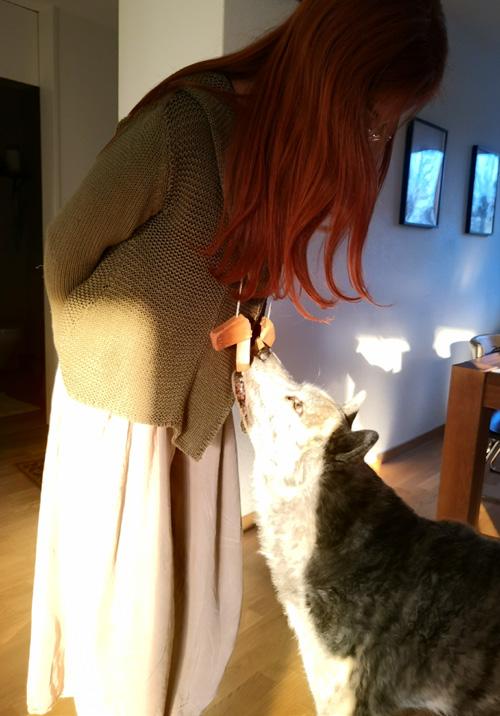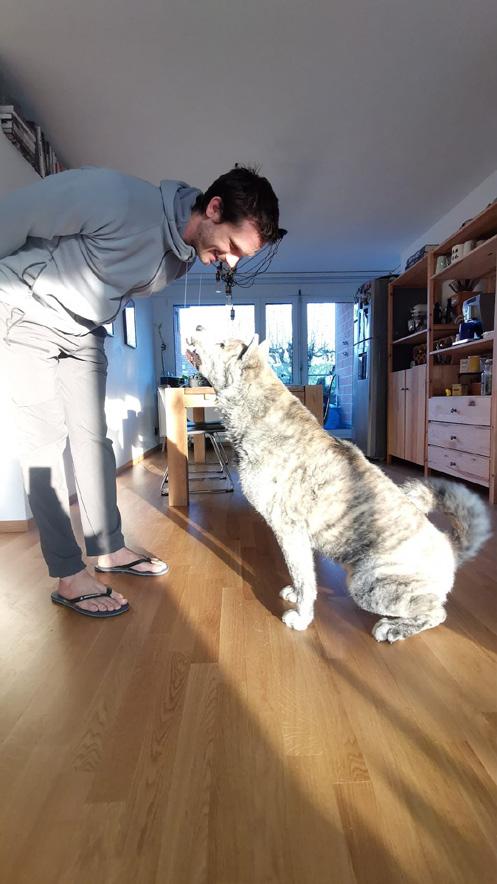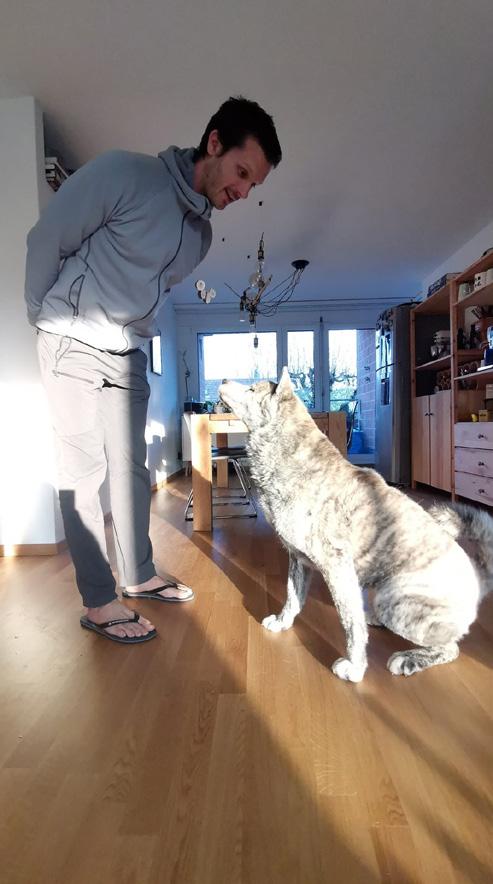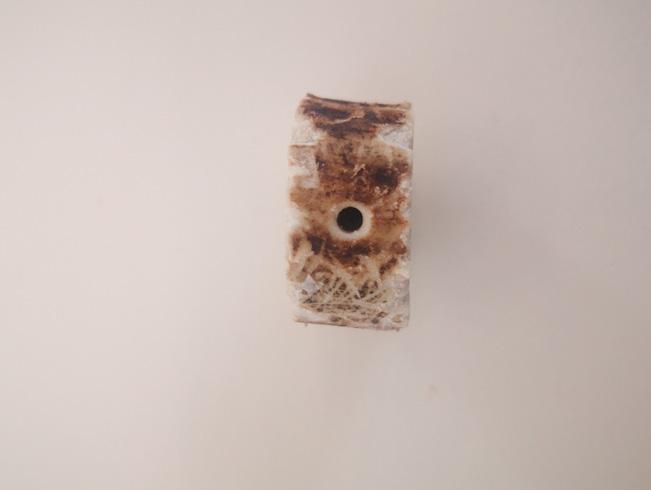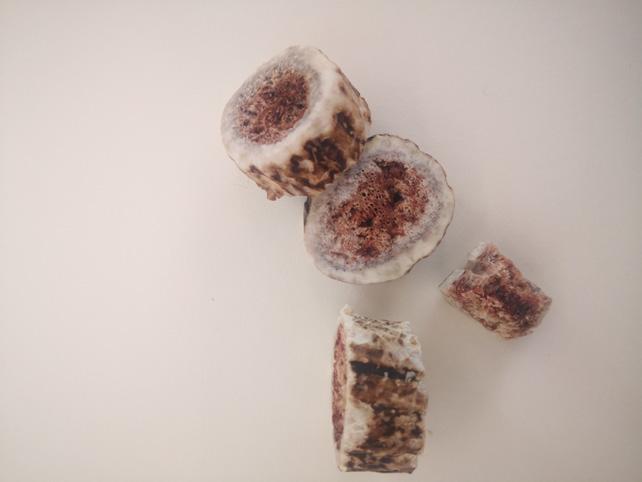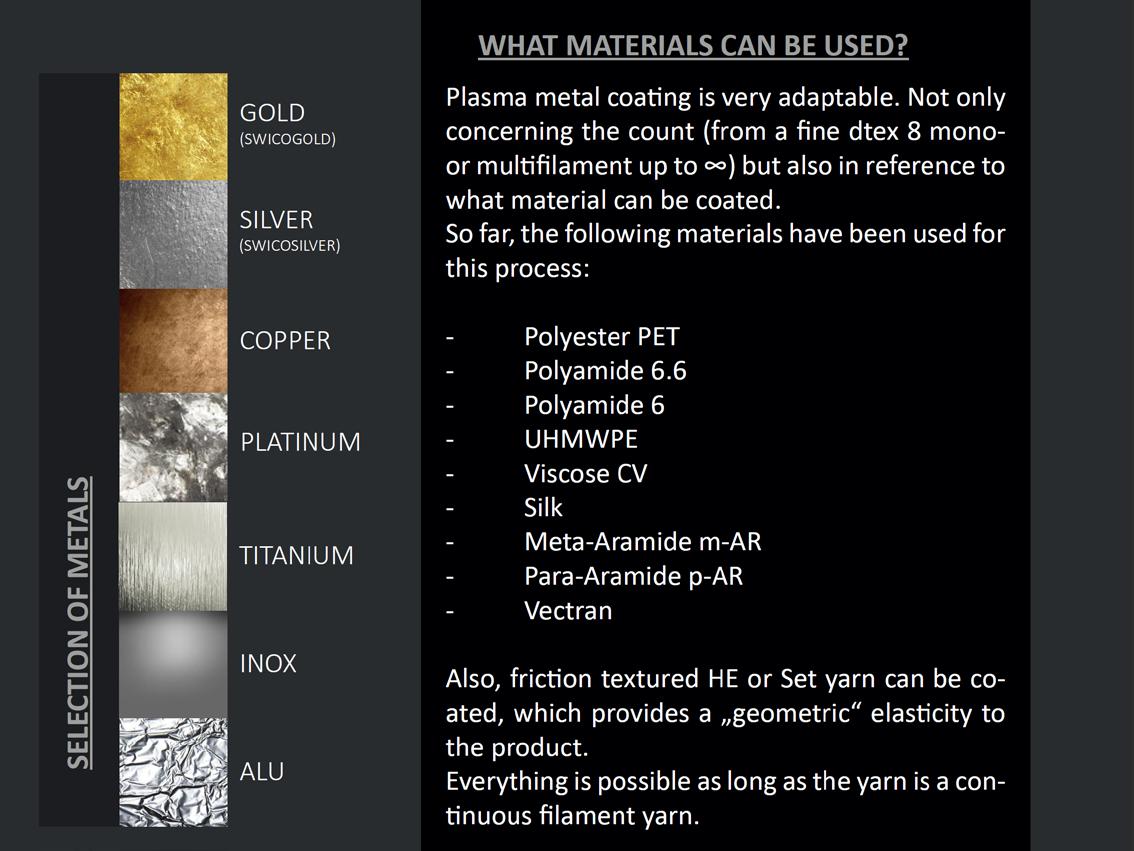
5 minute read
Experiments
Swicofil
Many products which are in direct contact with a dog’s body are textiles. The idea of working with sensor-enhanced objects led me to swicofil. They make plasma metal coated yarns which can be used in various fields as: - sensors - high-end fashion - embroidery/sewing - medical end uses - electronic components - defense applications - computing - jewelry & luxury A big advantage is the flexibility of the textile being a conductive material. SwicoSilver yarns reach conductivity values of > 1 ohm/cm - SwicoSilver HiCon values of even > 0.05 ohm/cm. Losing energy by badly conductive materials would be problematic because it would affect the body-related prototypes’ size and weight. The picture below shows some possibilities on how to apply the conductive yarn to other textiles.
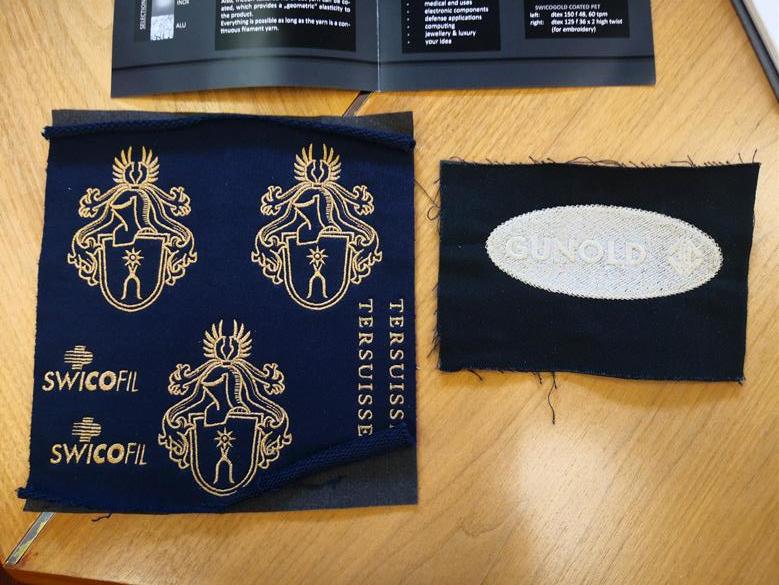
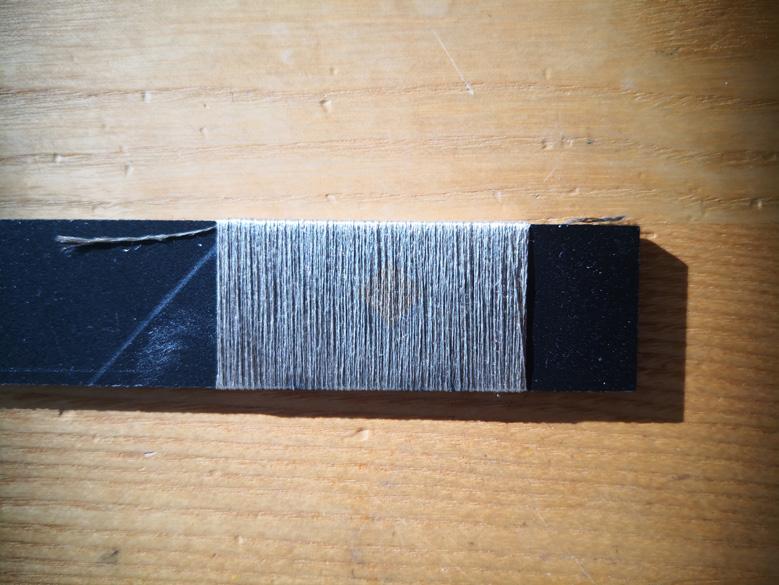
A piece of polyester FDY with plasma silver coating. After 60 household washing cycles 81% of the silver is still there.
Experiments
Old leash
I had this orange old dog leash which I decided to cut. The leash was separated into two identical belts sewn together. There was a bolt carabiner attached, and along with the leash, there were two D-rings and one O-ring distributed at each end.
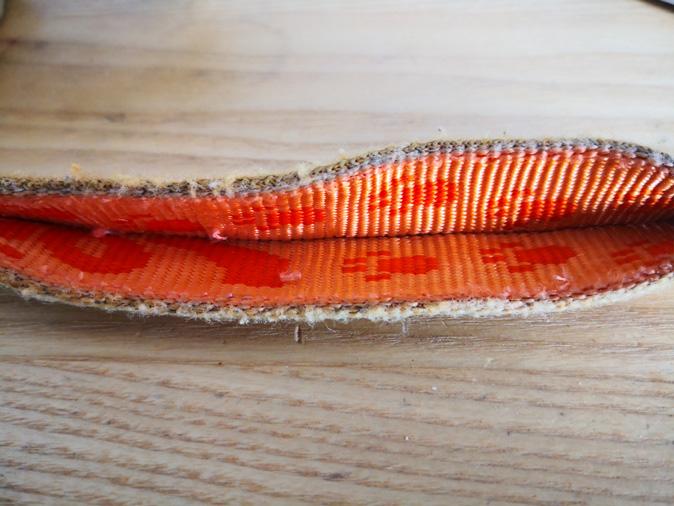

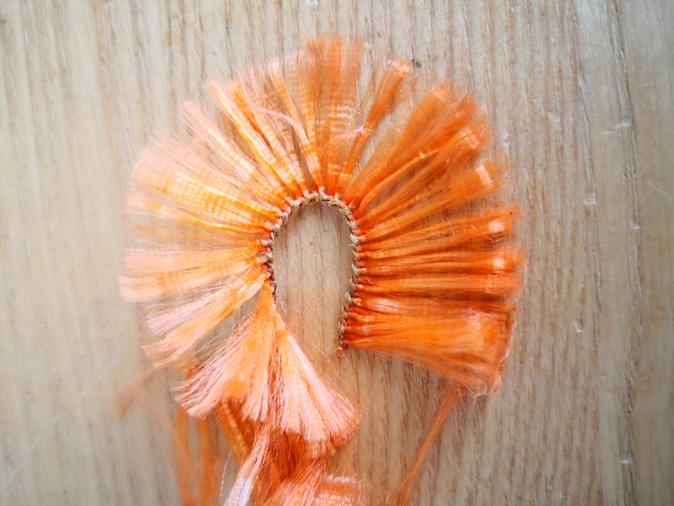
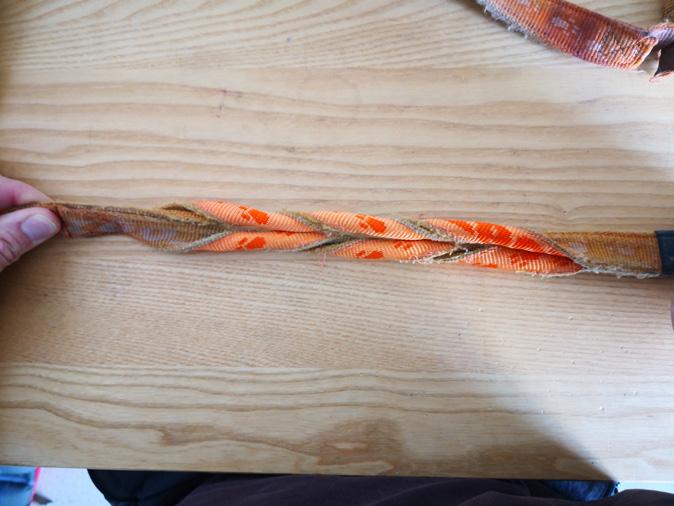
Conclusion As seen in the pictures, this leash was out in the sun for a long time by the difference in color. It was held together only by the filaments on the long sides, which once pulled out, the entire leash collapsed. I realized the two-sided property was fascinating and that I might use this in the future for this project.
Ways to grab a leash
What other possibilities exist to grab a leash comfortably/securely? I tried out a regular leash without any modifications or add-ons because I wanted to keep it simple, hoping to find a discovery by just playing around with it.
Conclusion However, my conclusion is that many people like to hold the leash, as shown in the first column on page seven. This grip is the easiest and firmest, especially if the dog pulls a lot; the participants in the research mainly used it. Ironically, it is also the grip medical practitioners advise against, hence a higher risk of injuries on the wrist. However, it also seems to be the most comfortable grip.
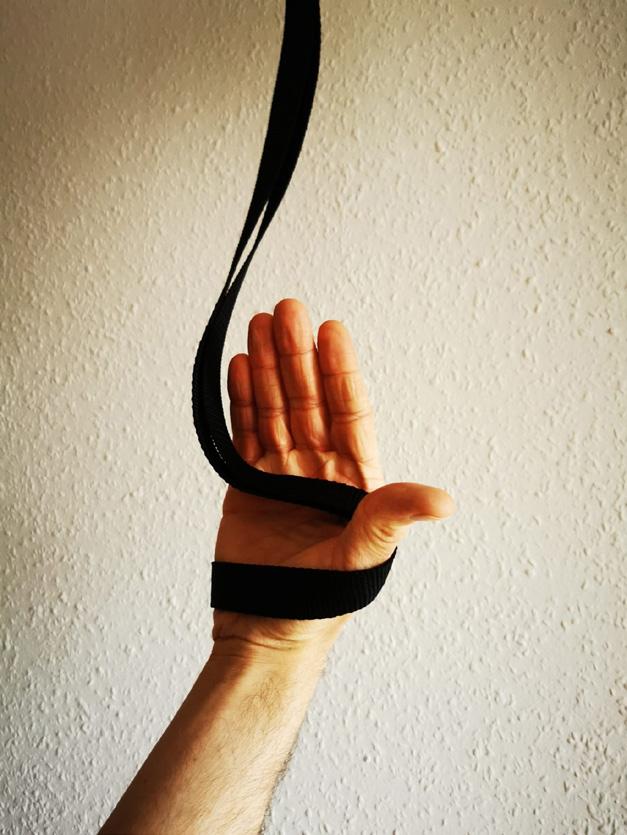
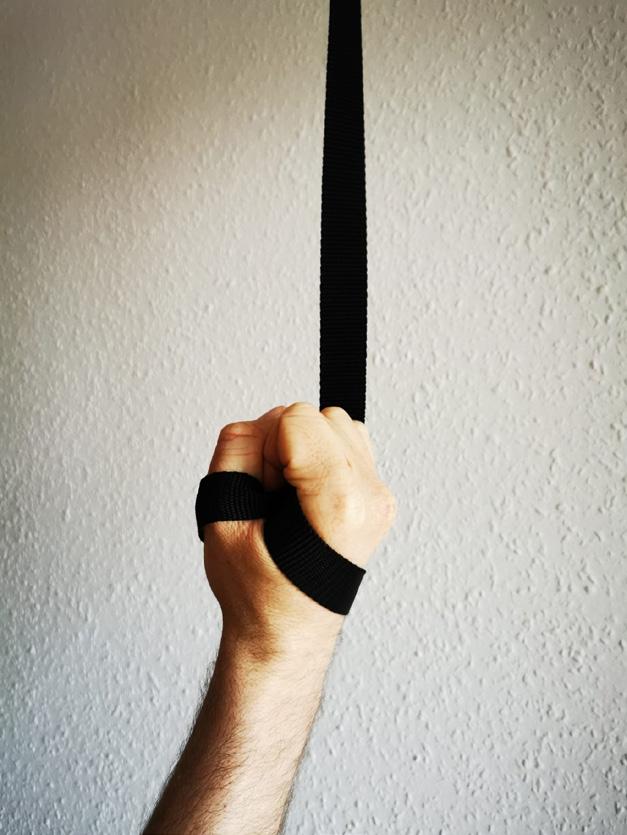
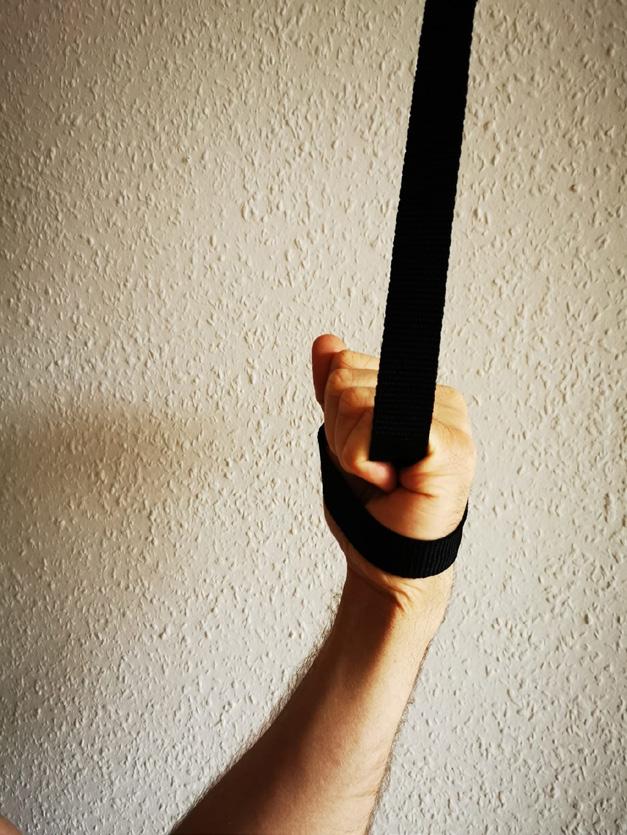
Scratching Enzo
One of my first attempts was this scratch- device printed on a 3D-Printer. The used material was a supporting structure for another print but proved to be helpful to upgrade Enzo’s experience of being scratched on his back. He could not get enough of it. The experiment is part of a series of simple, quick, and dirty experiments, including “The old leash” and “The Grip.” They all reflect my handling of already existing materials before exploring new ones.
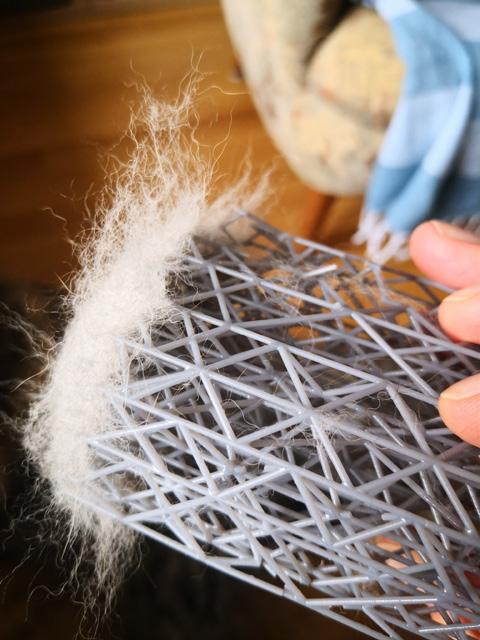
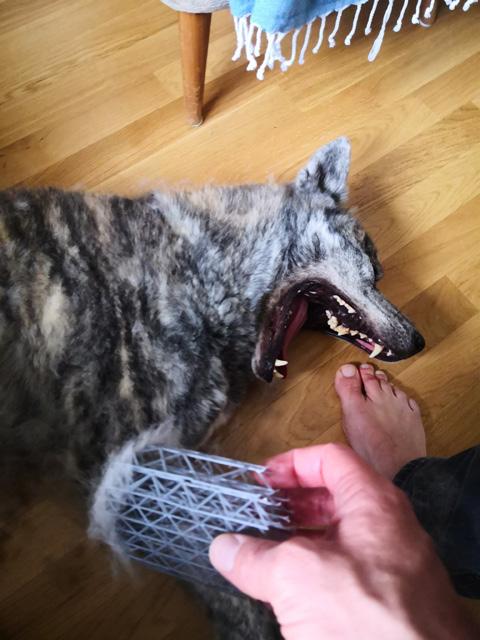
“Scratch a dog and you’ll find a permanent job.” – Franklin P. Jones
Conclusion The scratching always comes in combination with fur coming out. In this case, a lot, and it quickly “jammed” my improvised scratching-device, so I had to cleat it every minute.
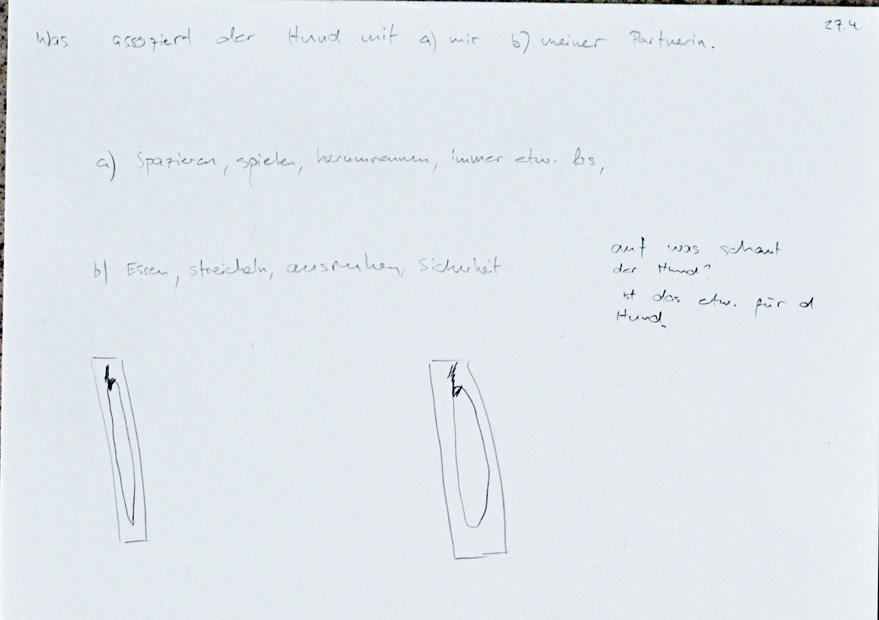
Chewies
I wanted to test two different things with these materials: Manipulate the shape of something my dog likes to facilitate him to shape it with its teeth differently. He would chew on the objects I used, but he would chew them differently by changing their size and shape. I wanted to test to see if he reacts differently towards objects he likes to chew on or even to eat if I have worn it before as a piece of jewelry. Therefore I utilized two different types of horns and also a chewing root.
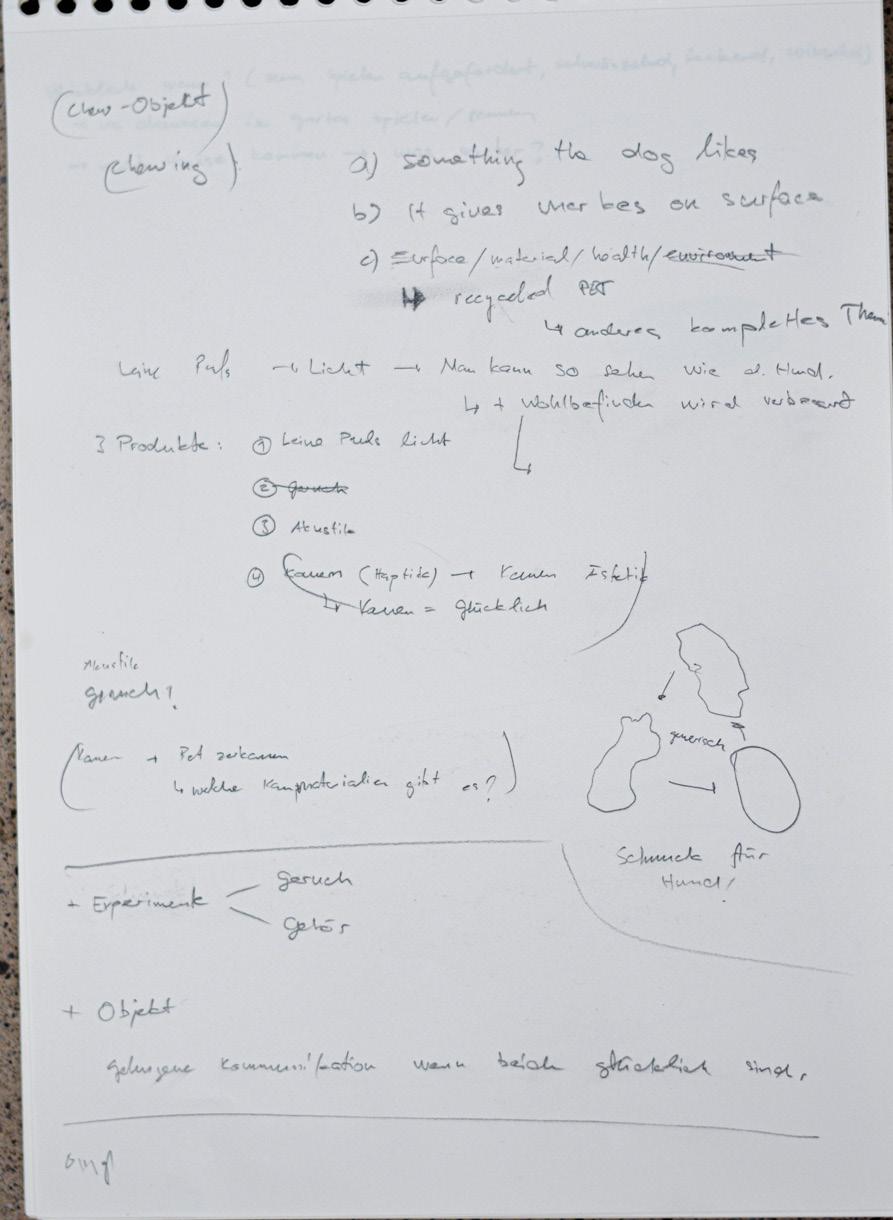
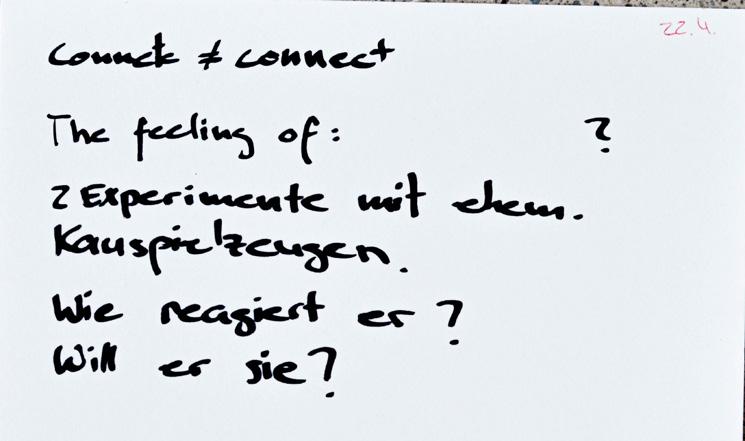
By cutting the horn into smaller pieces, Enzo could get quickly to the softer inside, and he tried to rasp out as much as possible using teeth and tongue. Unfortunately, the smaller pieces were also more delicate and therefore exposed to break quickly, which caused a hazard to Enzo since the pieces were quite sharp. Something similar happened to the chewing root: It increasingly gained popularity because it enabled him to break it quicker. But, nevertheless, these too acted as a health hazard in case of swallowing the bigger pieces.
He took a different approach once the objects were around Claudia’s or my neck. I made two different necklaces, one consisting of horns and the other of the chewing root. Although he wanted both badly, he did not grab them until we allowed him to. I presume this is because he sees the piece as something that belongs to us, and he knows he should not chew on those things.
After about an hour of wearing the pieces, I gave them to Enzo for five minutes. I repeated this process several times and realized: He only cared when he could not have it. Something we all are pretty familiar with.
